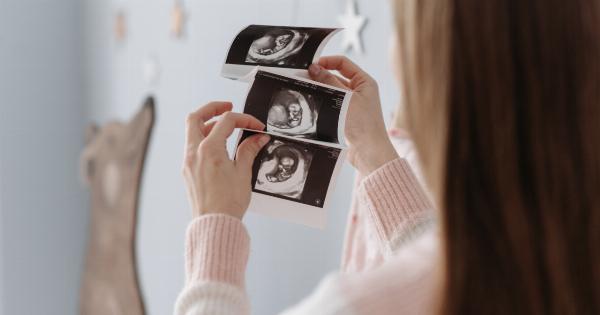Uterine contractions are a natural part of a woman’s reproductive system and play a crucial role in childbirth. These involuntary muscle movements are responsible for pushing the baby out of the uterus and into the world.
Contractions can also occur during the menstrual cycle, causing discomfort for some women. However, many misconceptions surround the topic of uterine contractions, leading to concerns about their safety and potential dangers. In this article, we will explore the truth about uterine contractions and whether they are truly dangerous or not.
Understanding Uterine Contractions
Uterine contractions are initiated by the release of a hormone called oxytocin. Oxytocin stimulates the uterine muscles, causing them to contract and relax rhythmically.
These contractions help dilate the cervix, allowing the baby to pass through the birth canal during labor. Throughout pregnancy, the uterus undergoes sporadic contractions, often referred to as Braxton Hicks contractions. These contractions are typically painless and may occur randomly or in response to certain activities or stimuli.
Are Uterine Contractions Dangerous?
While uterine contractions are a normal physiological process, they can become a cause for concern in certain situations. It’s important to understand the difference between normal contractions and abnormal ones that may indicate a complication.
In the early stages of labor, contractions are essential and necessary for the progression of childbirth. However, if contractions occur too early in pregnancy or are too frequent and intense, it could be a sign of preterm labor, which can be dangerous for both the mother and the baby.
Another potentially dangerous form of uterine contraction is the hypertonic contraction.
Unlike regular contractions that help move the baby down the birth canal, hypertonic contractions are overly intense and are not effective in facilitating progression. These powerful contractions can lead to an insufficient blood supply to the baby, resulting in fetal distress. Hypertonic contractions are more common in older mothers, those with uterine abnormalities, or those using certain fertility treatments.
The Importance of Monitoring Contractions
To determine whether contractions are normal or potentially dangerous, healthcare providers often monitor their frequency, intensity, and duration.
A common method of tracking contractions is by timing the intervals between each contraction and assessing their strength. This information helps healthcare professionals assess the progress of labor and identify any abnormalities.
Proper monitoring is particularly crucial during high-risk pregnancies or when there are preexisting conditions that may increase the likelihood of complications.
Signs of Dangerous Contractions
There are several signs that may indicate that uterine contractions are becoming dangerous. If you experience any of the following, it is important to seek medical attention immediately:.
1. Contractions that occur before the 37th week of pregnancy, as this may indicate preterm labor.
2. Contractions that are less than five minutes apart or last longer than one minute, as this may suggest rapid progression of labor.
3. Excessive bleeding or fluid leakage along with contractions.
4. Severe pain or discomfort that is not relieved by changing positions or other relaxation techniques.
5. Contractions that do not follow a regular pattern or increase in intensity over time, as this could indicate a problem with the baby’s positioning.
Managing Painful Contractions
Although contractions during childbirth are often painful, there are various techniques and medications available to manage the discomfort. Some women find relief in using relaxation techniques, such as deep breathing, visualization, and massage.
Others opt for medical interventions, such as epidural anesthesia, which can numb the lower body and provide pain relief during labor. It is essential to discuss pain management options with your healthcare provider to determine the best approach for you.
Treating Dangerous Contractions
If uterine contractions are deemed dangerous or abnormal, healthcare providers will take appropriate measures to prevent further complications.
In the case of preterm labor, medications like tocolytics may be prescribed to temporarily halt contractions and delay labor. Additionally, bed rest or hospitalization may be recommended to provide close monitoring and ensure the safety of both the mother and the baby.
In severe cases, an emergency cesarean section may be necessary to protect the well-being of the mother and the baby.
Conclusion
Uterine contractions are a normal part of a woman’s reproductive system, serving a vital purpose during childbirth. While contractions can cause discomfort, they are generally not dangerous.
However, certain circumstances, such as preterm labor or hypertonic contractions, may pose risks and require medical attention. Monitoring contractions and seeking timely medical assistance are essential for identifying any potential complications and ensuring a safe delivery for both the mother and the baby.





























